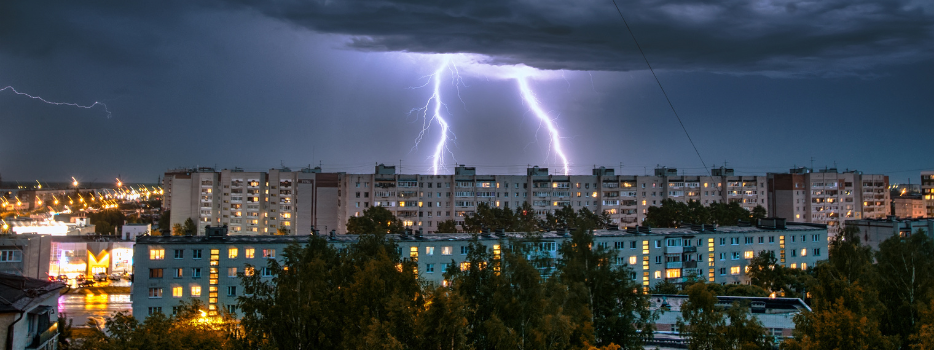If you own a small business, thunderstorms and other natural disasters can cause significant disruptions. If you lease or own a building, do you know who’s responsible for repairing the damage after a storm occurs? Knowing this ahead of time can ease the recovery process.
The lease language can dictate whether the tenant or landlord is responsible for specific areas of the building. Please ensure you’ve reviewed the lease with your agent to identify and address coverage gaps.
Here are some types of storm damage that could affect your business in an owned or leased building:
- Roof
- Water
- Wind
- Electrical or equipment
- Structural
- Landscape
Building owner responsibilities
If you’re the building owner and lease it to others, here’s what you’re responsible for after a storm occurs:
The building
This includes the roof, walls, foundation, and exterior.
Common areas
This includes parking lots, sidewalks, and landscaping.
Tenant responsibilities
If you lease the building, here’s what you’re responsible for after a storm occurs:
Business personal property
While the landlord is responsible for the building's structure and common areas, you’re responsible for any damage to your property inside the building. Items may include equipment, inventory, fixtures, or improvements and betterments. If you’re unfamiliar with the term improvements and betterments, this refers to fixtures, alterations, additions, or installations that are made permanent to the building at your expense. They may also increase the value of the building. If you move elsewhere, they’ll likely need to stay. Examples include cabinets, counters, flooring, and appliances.
Business interruption
If storm damage causes your business to close temporarily until the repairs are made, your business obligations won’t cease. If you have business interruption insurance coverage, it may cover expenses that you’re still responsible for paying. Examples include rent, employee wages, taxes, or loan payments.
Post-storm tasks
Here’s a list of things to do after a storm damages your business and leased or owned building:
Document damage
After the storm has passed, document the damage you see. The roof and equipment on it will likely need to be inspected by a professional.
Contact your landlord
If you lease the building, contact your landlord to let them know a severe storm has passed and that there may be damage to their building.
Prevent further damage
Take steps to prevent additional damage from occurring to your property inside the building.
File an insurance claim
Contact your insurance agent or company sooner rather than later. By doing so, the recovery process can begin.
Seek legal advice
Unfortunately, disputes may arise during the recovery process. If this is the case, contact an attorney who specializes in commercial real estate or landlord-tenant law.
This article is intended for general educational and illustrative purposes only and should not be construed to communicate legal or professional advice. Further, this article is not an offer to sell insurance. Please consult with your licensed insurance agent for specific coverage details and your insurance eligibility. All policies are subject to the terms, conditions, limitations, definitions, and exclusions contained therein.






